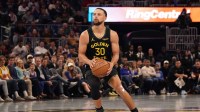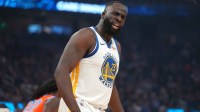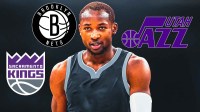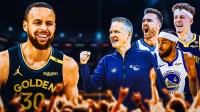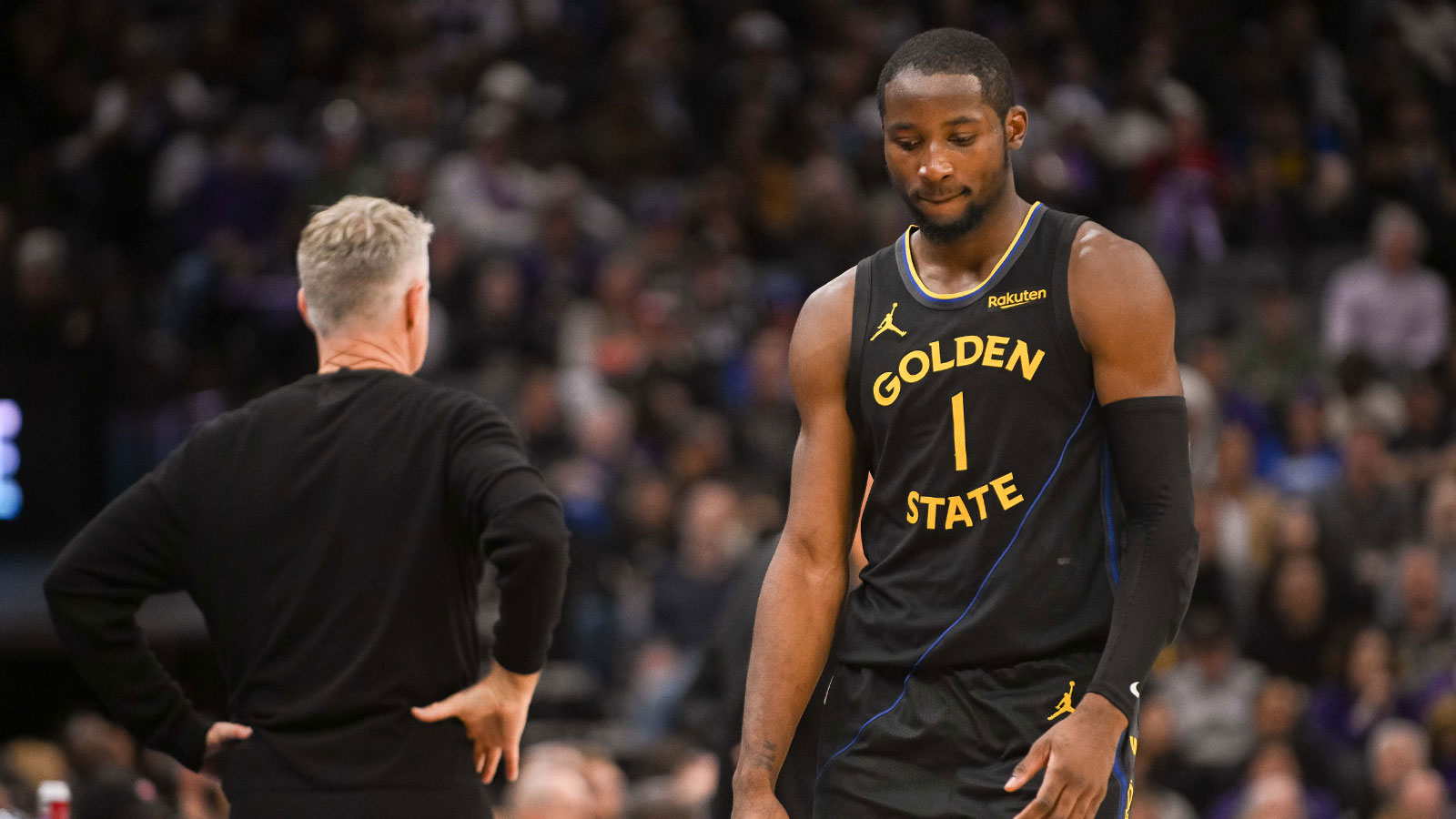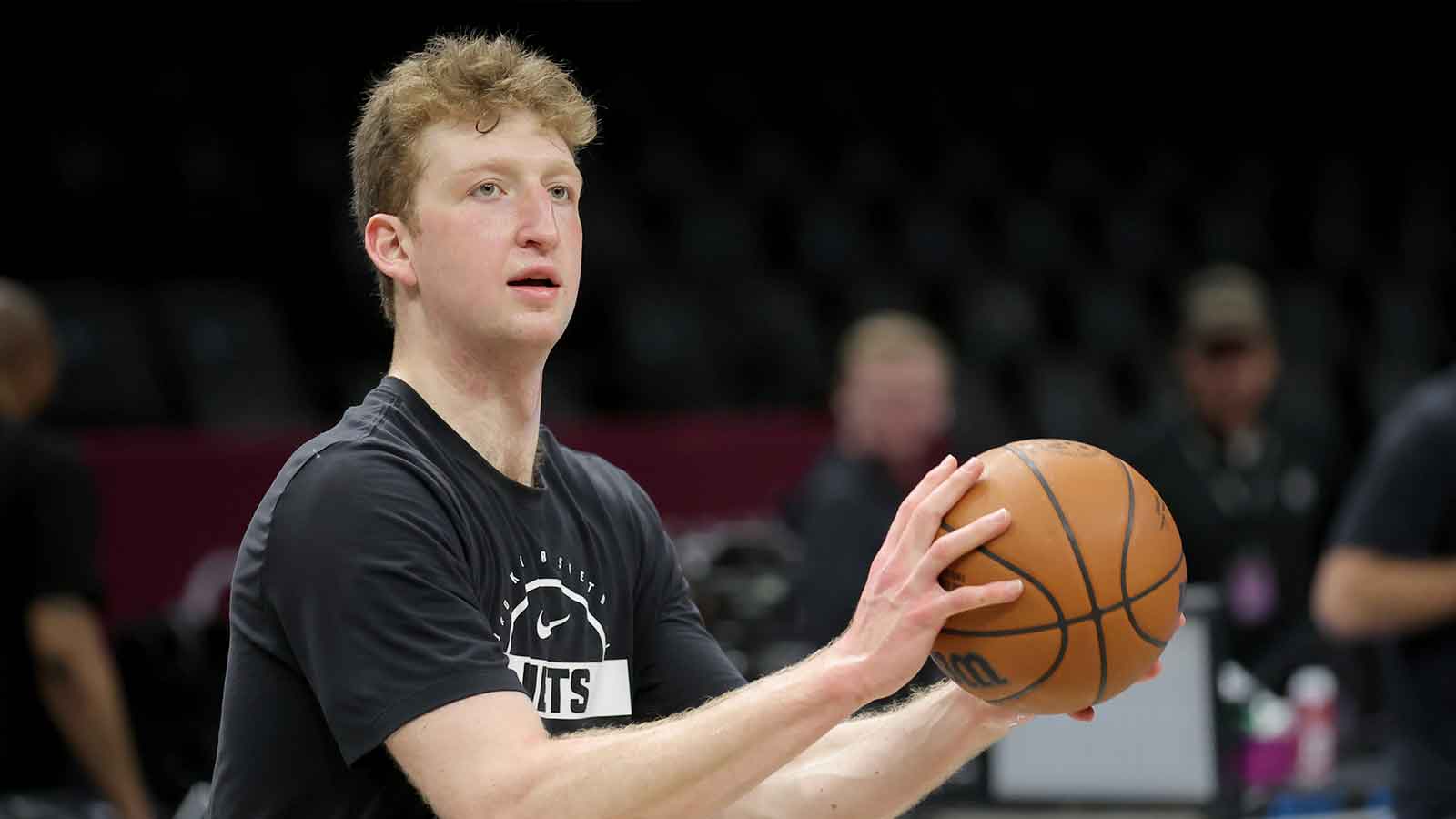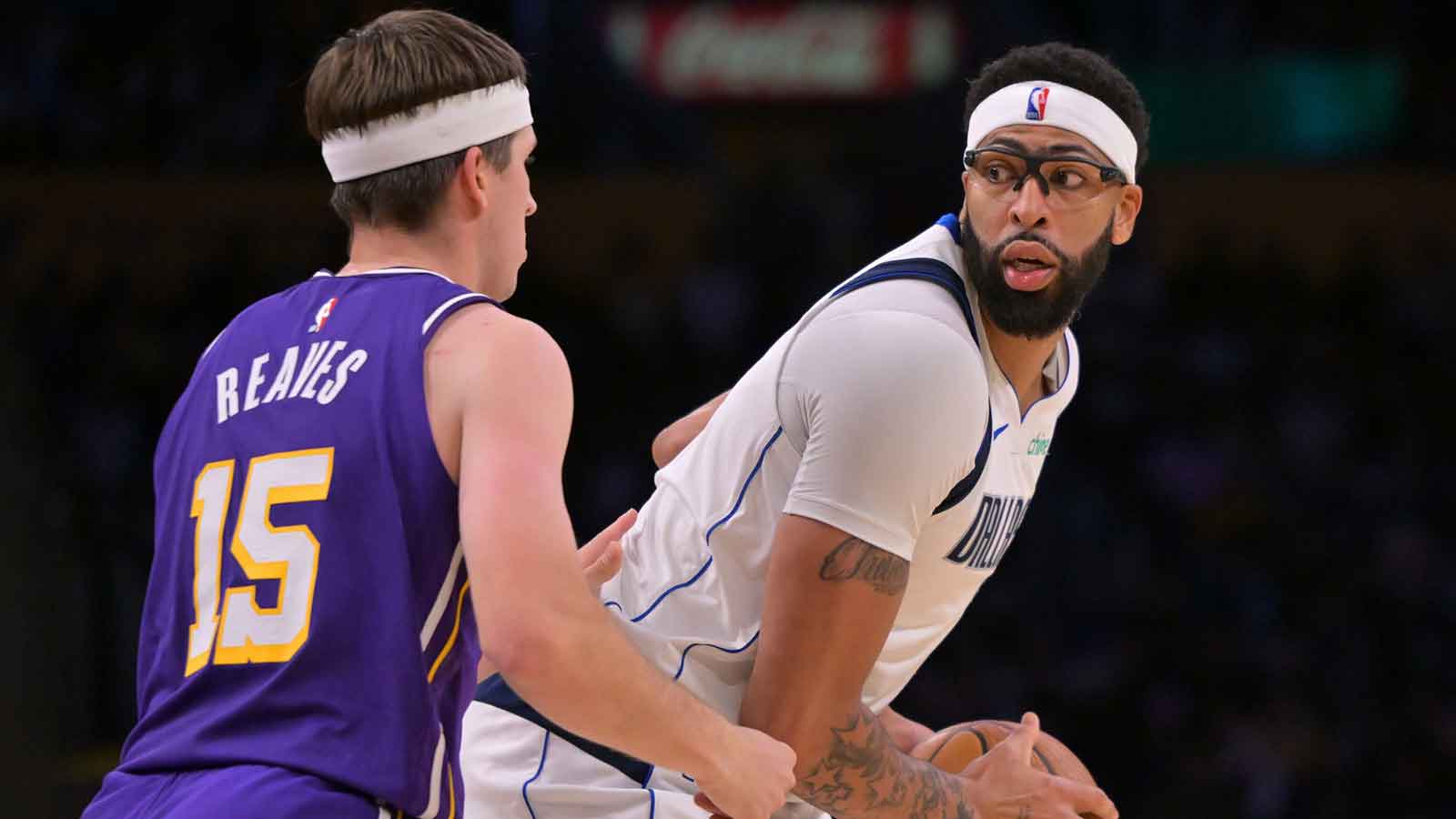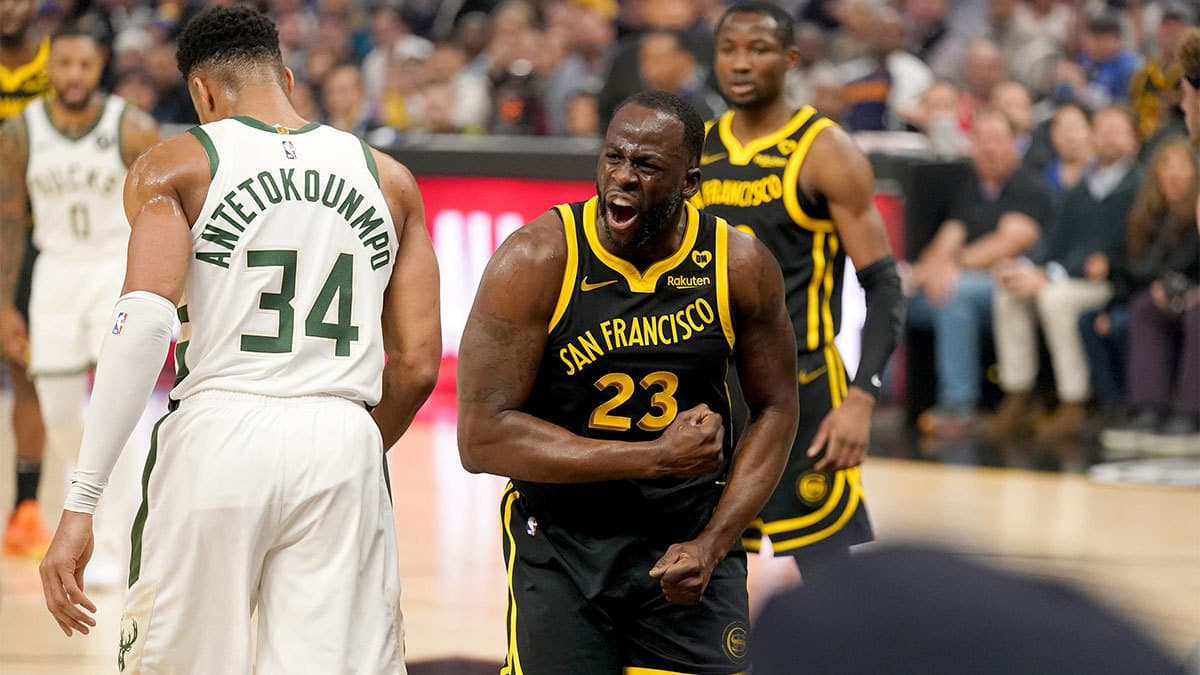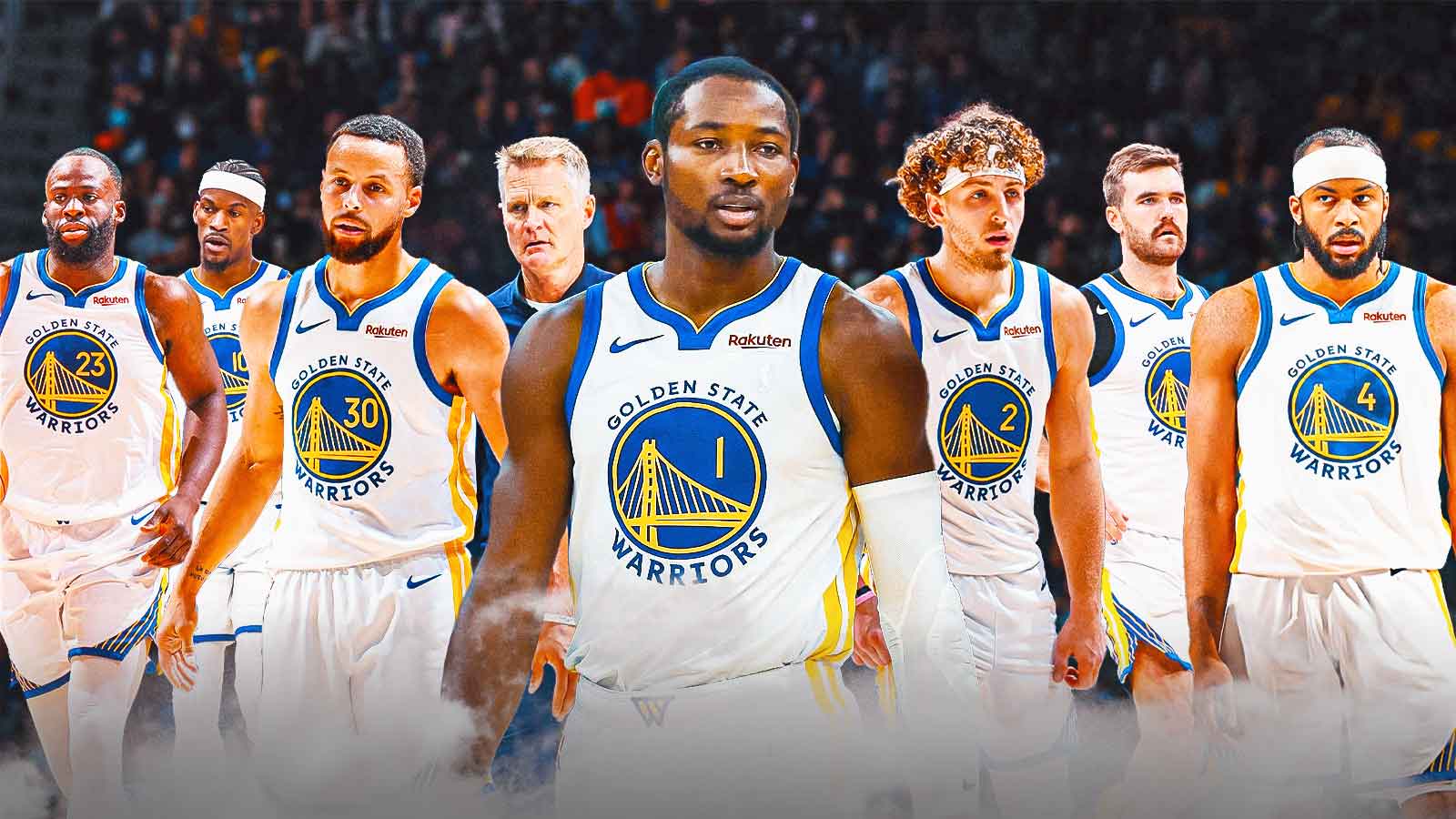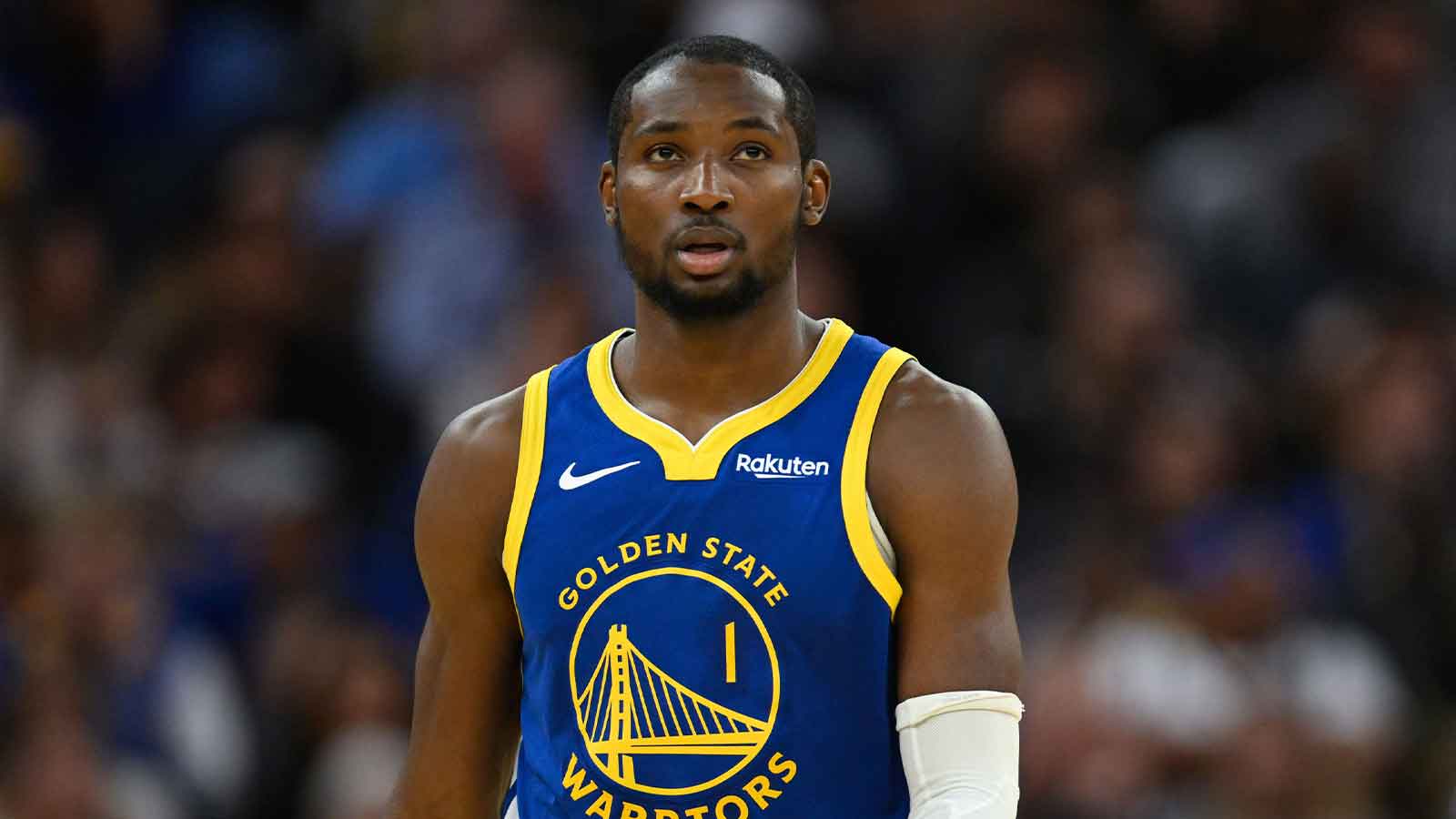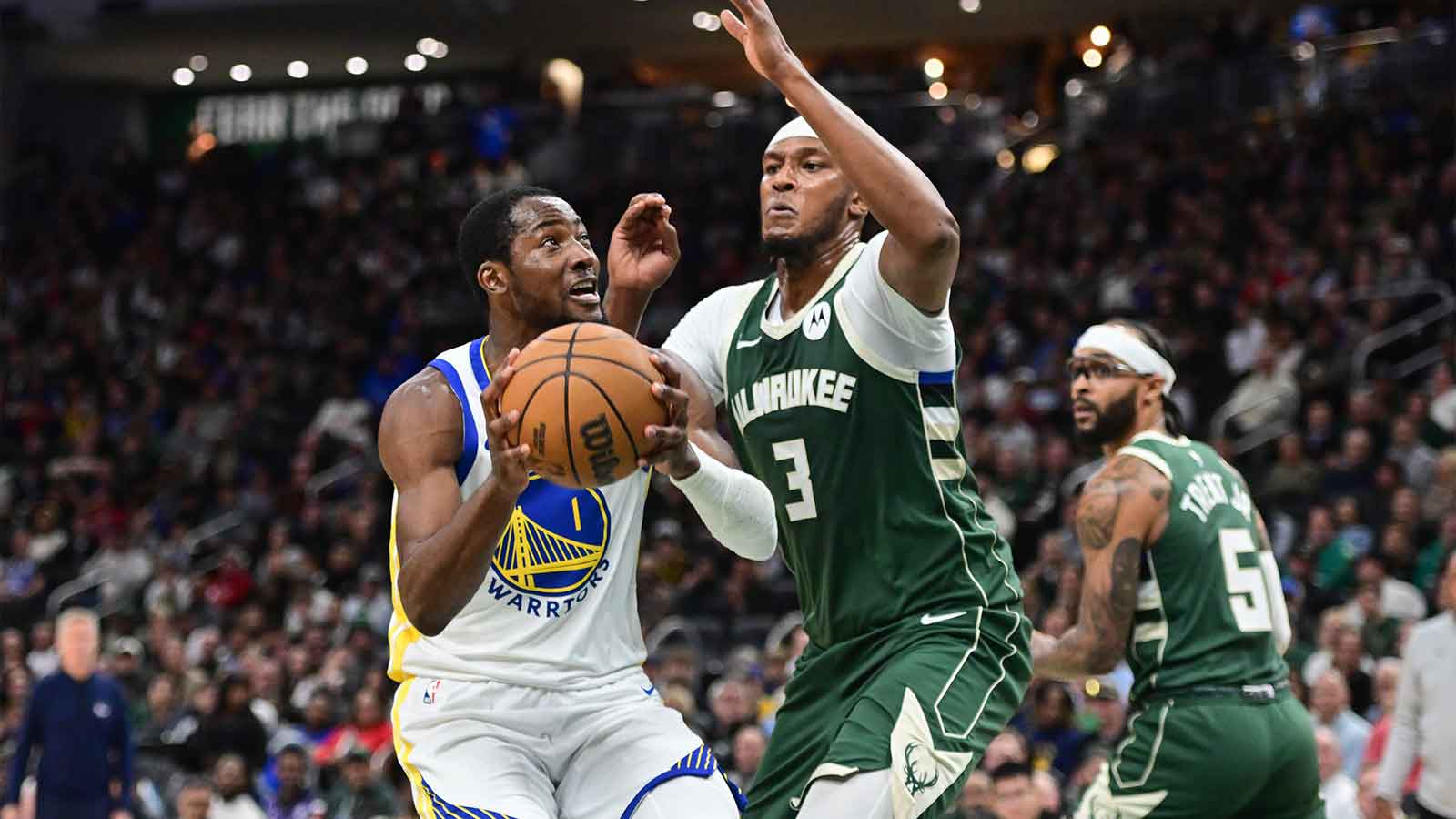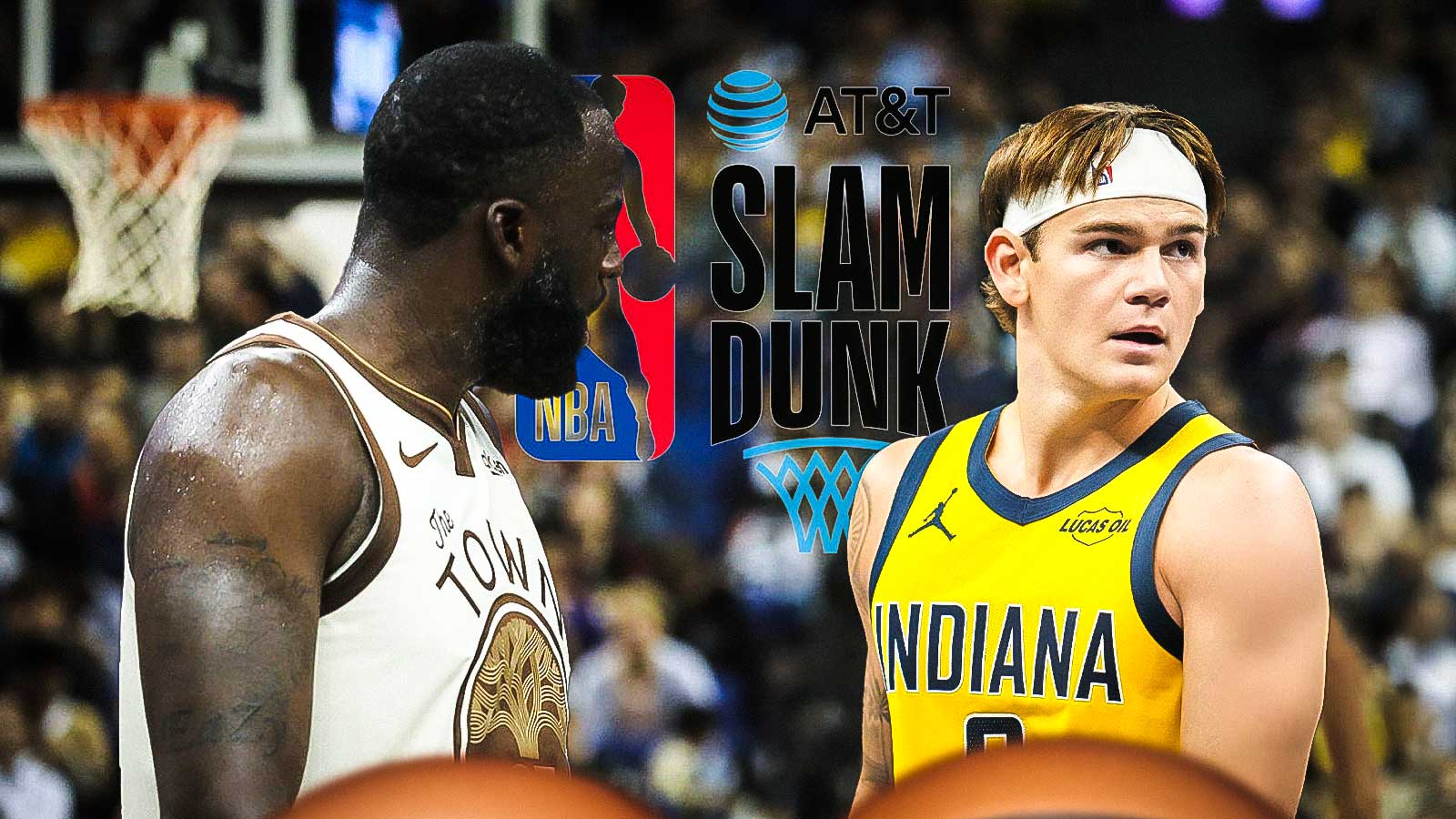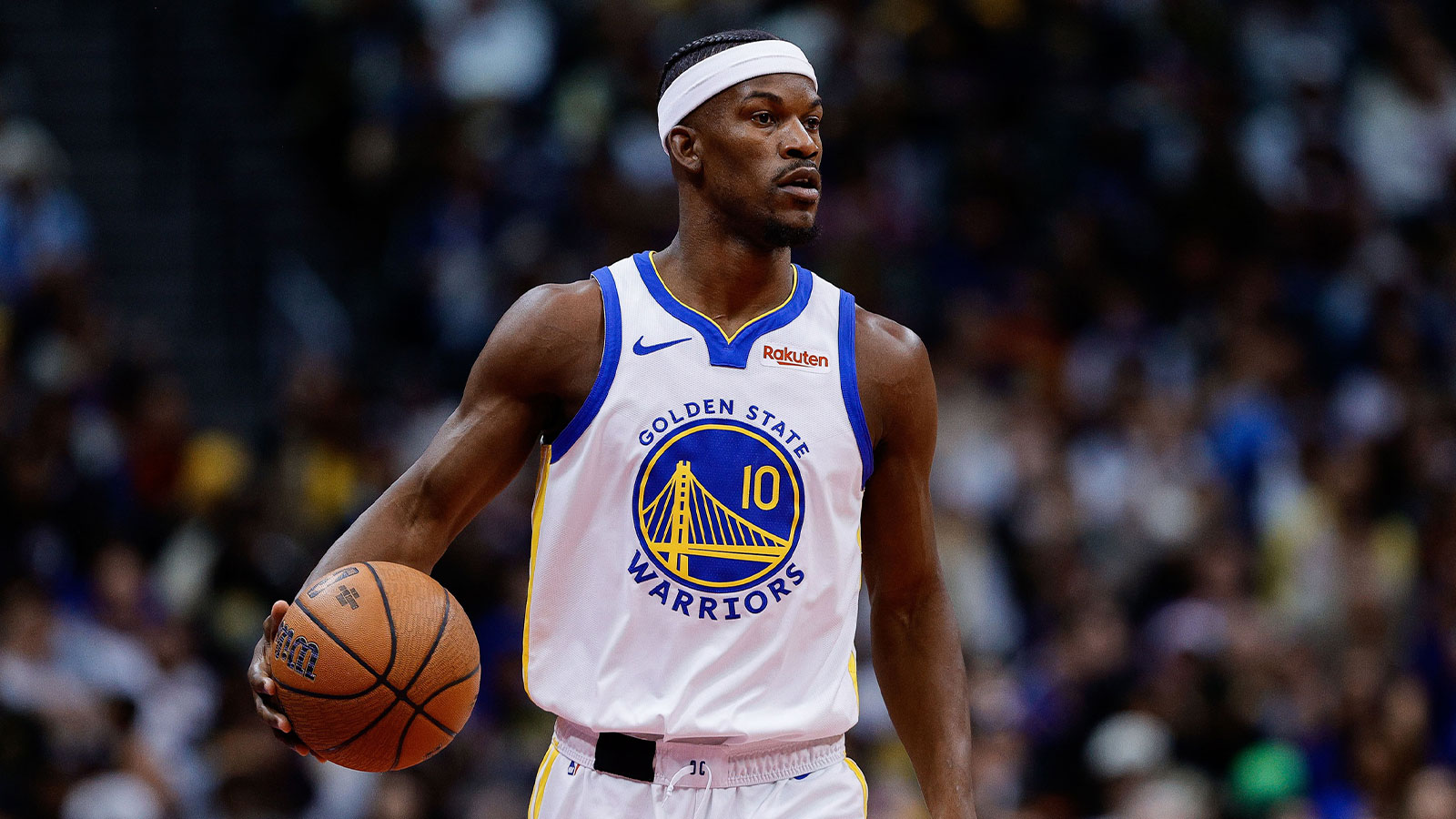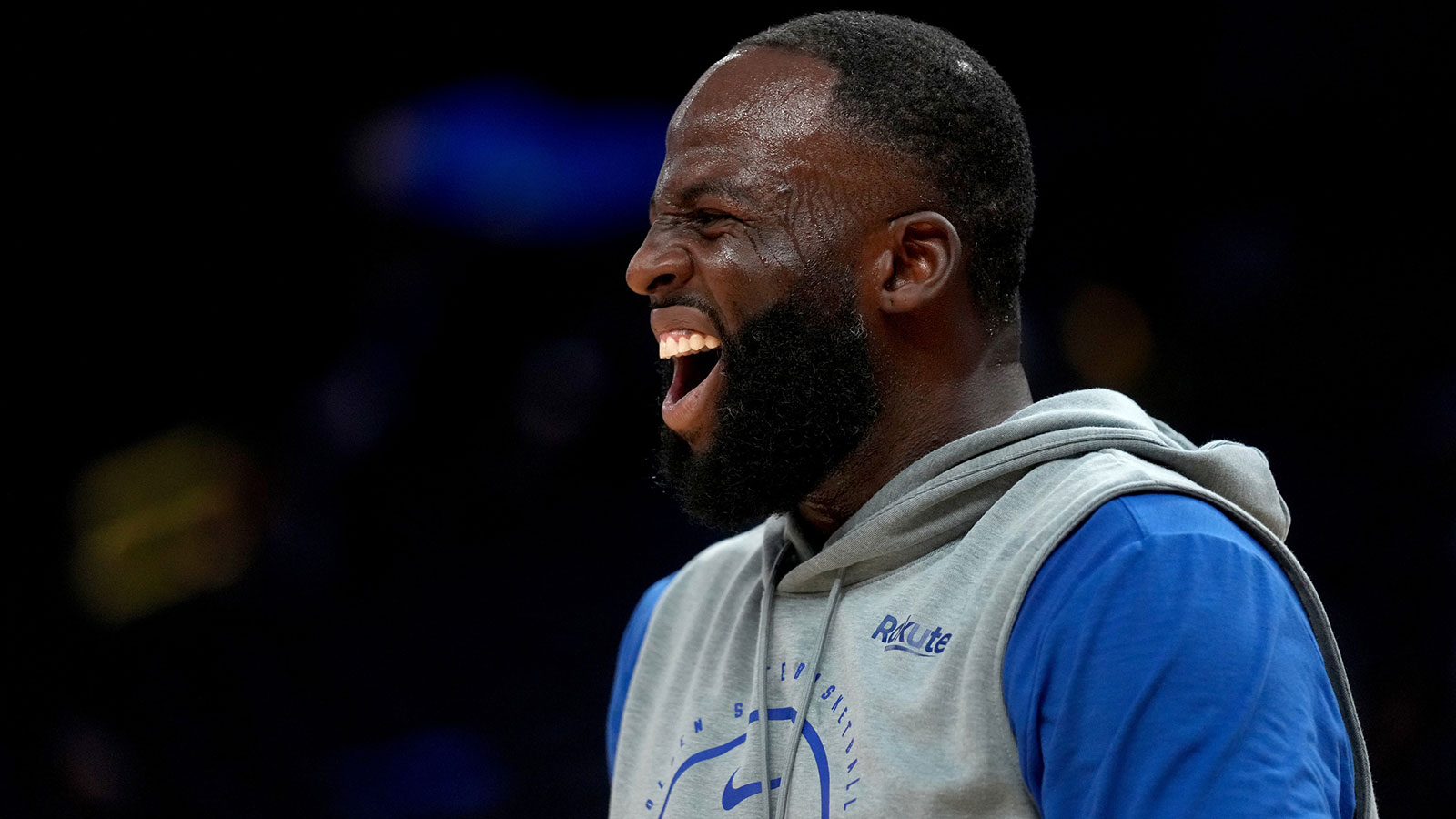The Golden State Warriors have had an illustrious history in the NBA, from their time as the Philadelphia Warriors to their current iteration playing out of San Francisco for the first time in decades.
Warriors lore goes back all the way to 1946 as members of the Basketball Association of America. That league eventually became the NBA in 1950, and that's the right place to start with one of the first and best draft picks in franchise history.
1950: Paul Arizin (Villanova)
The Pennsylvania native was the territorial pick of the Philadelphia Warriors, playing his entire NBA career with the franchise and posting averages of 22.8 points and 8.6 rebounds in 713 games. Arizin chose to retire from the NBA instead of relocating with the team to San Francisco.
He was a three-time All-NBA First Team selection, a 10-time All-Star, and one of the select few to be chosen as one of the NBA's Top 50 players in 1996 for the league's 50th anniversary. Arizin helped the Warriors lift their first-ever NBA championship trophy in 1956 (Warriors won 1946-47 BAA title before the league became the NBA). His jersey is the first of many hanging in the rafters of Chase Center today.
1959: Wilt Chamberlain (Kansas)
Perhaps the greatest Warrior ever, The Stilt played only six seasons with the franchise and he was never truly adopted by the new fan base in San Francisco after the team relocated. He was originally a territorial pick by the Philadelphia Warriors. Chamberlain was traded to the Philadelphia 76ers in his sixth season, as the team had recently relocated (and rebranded) from Syracuse at the time.
Chamberlain's numbers with the Warriors are the stuff legends are made of. He averaged a whopping 37.6 points and 27.0 rebounds as a rookie — a mark he would top the very next year.
Wilt's mythical 50.4 points-per-game season, his third in the league, was accompanied by a mindblowing 25.4 rebounds and a career-best in free-throw shooting (61.3%). The legendary giant played 48.5 minutes per game, taking part in every minute of play that season, including overtime, in one of the most fabled seasons (1961-62) in NBA history — the same that included his iconic 100-point game.
1960: Al Attles (North Carolina A&T) — 39th overall pick
Attles isn't the typical jersey that gets lifted to the rafters. His 8.9 points scoring average through 711 NBA games does not suggest greatness. He was known as “The Destroyer” due to his knack for tough defense and his reputation after once punching a player in the jaw.
His deepest impact came after his playing career, when he became one of the first African-American coaches to grace the NBA as a player-coach. He would help guide a Rick Barry-led Warriors team to the 1975 NBA title over the heavily favored Washington Bullets. He would become the second African-American coach to win a title, after Bill Russell.
1961: Tom Meschery (Saint Mary’s) — 7th overall pick
The Mad Russian is a peculiar but well-remembered former player. Meschery played next to Wilt Chamberlain on those early '60s teams and lost to Chamberlain in the NBA Finals after he was traded to the 76ers.
He was selected by the Seattle SuperSonics during the 1967 NBA Expansion Draft and would finish his NBA career there, holding averages of 12.7 points and 8.6 rebounds. He was a known poet in his post-basketball career and dedicated one of his poems to Chamberlain after spending those few seasons together.
1963: Nate Thurmond (Bowling Green) — 3rd overall pick
The late Thurmond averaged 17.4 points, 16.9 rebounds in 757 games for the Warriors, spending 11 seasons with San Francisco/Golden State. He spent the last three years of his career with the Chicago Bulls and the Cleveland Cavaliers. Thurmond helped the Warriors reach the 1967 NBA Finals but lost to Chamberlain's 76ers.
He was traded to the Bulls in 1974, just as the Warriors retooled and won a title with Rick Barry that very season. Thurmond is known for being the first NBA player to post a quadruple-double, but he did it in a Bulls uniform, posting 22 points, 14 rebounds, 13 assists and 12 blocks against the Atlanta Hawks.
1965: Rick Barry (Miami) — 2nd overall pick
Undoubtedly the most polarizing player in this list. Barry was drafted second overall by the Warriors in 1965 but didn't take long exploring other options, jumping to play for the Oakland Oaks of the American Basketball Association after a rift with owner Franklin Mieuli over unpaid compensation. That dispute made him look money-hungry, especially after taking a three-year, $500,000 check from Oaks owner Pat Boone, one he deemed “one I simply couldn't turn down.”
Barry, known as the godfather of the underhand free throw, would redeem himself upon returning to the NBA after a United States District Court judge issued an order prohibiting him from playing for any team other than the Warriors.
A less-mobile version of the previously-athletic Barry played a more perimeter-oriented game, one that helped the Warriors to that 1975 NBA title. His inspired play helped the franchise take down the Washington Bullets in sweeping fashion after the latter was heavily favored to win it all. Barry was named the 1975 Finals MVP and remains one of the staples in Warriors lore to this day.
Barry spent eight seasons with Golden State during his combined two stints, was the Rookie of the Year, a five-time All-NBA First Team selection, eight-time All-Star, and one of the members of the NBA's Top 50 players. He averaged 25.6 points, 7.3 rebounds, 5.1 assists, and 1.4 steals through 642 games with the franchise.
1976: Robert Parish (Centenary College of Louisiana) — 8th overall pick
Parish only played four seasons with the Warriors but was unfortunate to be selected in a post-glory era. Most of the accomplishments of his 21-year career are tied to the 14 years he spent with the title-racking Boston Celtics. For what it's worth, he did average a career-high in blocks per game (2.9) in his third season with Golden State.
Even if his stint was short, he was still a great selection by the Warriors and turned out to be a Hall of Famer.
1985: Chris Mullin (St. John’s) — 7th overall pick
The son of Brooklyn, New York was a true blessing for a franchise devoid of success for quite a few years. Mullin was primarily a spot-up shooting guard playing next to Sleepy Floyd in the backcourt, but that all changed once Mitch Richmond and Tim Hardaway got there, forming the popular Run TMC.
Mullin never won a championship with the Warriors but was named to the All-NBA First Team in 1992, a five-time All-Star, and averaged 20.1 points, 4.4 rebounds, 1.7 steals in 807 games for the franchise. The lefty remains one of the most endearing former players and has his No.17 jersey raised high into the bleachers.
1988: Mitch Richmond (Kansas State) — 5th overall pick
Richmond, the 1988-89 Rookie of the Year, played only three seasons for the Golden State Warriors, but those were filled with fond memories of a fast-paced offense under Don Nelson. A strong, well-rounded slasher, with a knack for finding the hoop, Richmond averaged 21.9 points per game or more in his first 10 years in the league.
Nicknamed “The Rock” for his sturdy build and strong finishes at the rim, Richmond was part of a fun-filled era and was an integral part of the trio he comprised alongside Tim Hardaway and Chris Mullin.
1989: Tim Hardaway Sr. (UTEP) — 14th overall pick
One of the most iconic Warriors. Known as “The UTEP Two-step” and inventor of “The Killer Crossover,” Tim Hardaway brought excitement and a unique ability to combine an electric style of play with gaudy All-Star-worthy numbers.
Hardaway averaged a career-high 23.4 points a game in the 1991-92 season and posted 20-point, 10-assist seasons twice before a knee injury took him out the entire 1993-94 season. His return to the floor in 1994-95 showed he still had something to give, but he was ultimately traded to the Miami Heat in 1995-96, ending his rousing stint with the franchise.
2009: Stephen Curry (Davidson) — 7th pick
The fact that the Warriors went a full 20 years without a truly notable, franchise-changing player in the draft can speak to how Golden State was the laughingstock of the NBA for an entire decade. Curry slipped to No. 7 after the Minnesota Timberwolves inexplicably drafted two point guards ahead of him: Ricky Rubio (No. 5) and Jonny Flynn (No. 6).
Questions about his thin frame and high dependability on his jump shot emerged as potential counters to drafting him in the top five. Curry quickly proved those to be wrong, and soon enough emerged as a budding star in the game, capturing titles in 2015, 2017, and 2018, along with two MVP trophies (2015, 2016), two scoring titles (2016, 2021) and a steals title (2016).
His story is still being written, but many already consider him the best player in franchise history.
2011: Klay Thompson (Washington State) — 11th pick
Thompson was a somewhat obscure prospect in the 2011 NBA Draft coming out of a school not renowned for its basketball program. Yet just like they did with Stephen Curry out of Davidson, the Warriors scored another home run with an elite-caliber sharpshooter in Thompson.
His improvement during his rookie year was enough for the front office to spin the wheel and trade then-star Monta Ellis for Andrew Bogut, giving birth to the All-Star backcourt now known as “The Splash Brothers.”
Thompson is a three-time champion and five-time All-Star. He and Curry are the only active players to shoot 40 percent or better from beyond the arc in every one of their full NBA seasons.
2012: Draymond Green (Michigan State) — 35th pick
The story of Green memorizing each of the 34 names called by then-commissioner David Stern before his is well-known by now. The Saginaw native turned that blue-collar mentality into sheer determination after facing questions about his natural position on the court.
Draymond benefited from a David Lee injury, getting the nod to start under then-new coach Steve Kerr after only registering 13 starts in his first two seasons. The rest is history.
Much like Curry and Thompson, Green is a three-time champion with three All-Star appearances and a Defensive Player of the Year title to his name.


